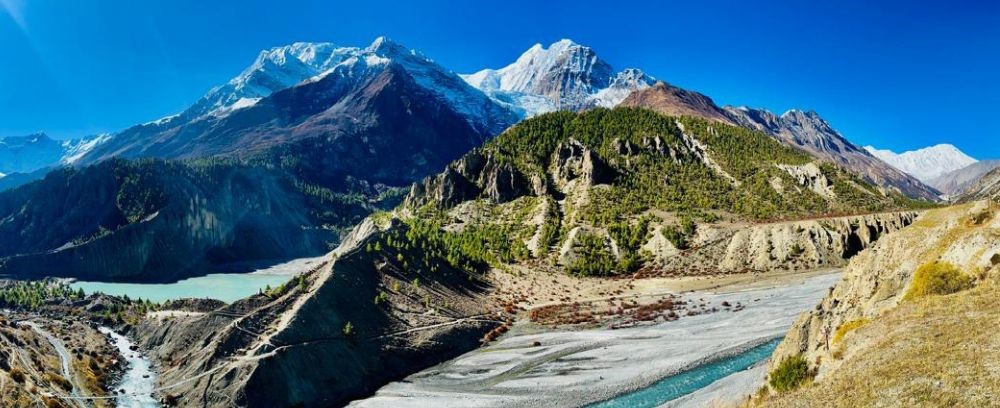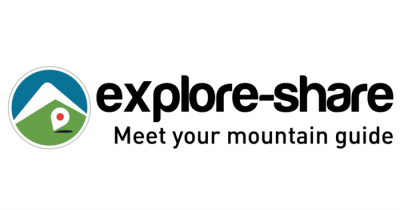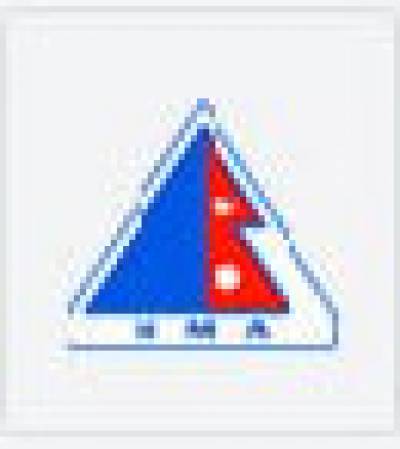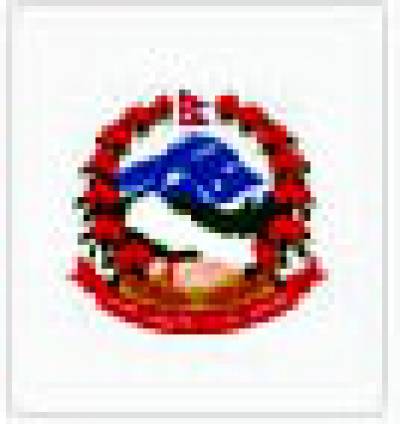ANNAPURNA CIRCUIT TILICHO LAKE POON HILL TREK 14 DAYS FROM POKHARA
The Annapurna Circuit Tilicho Lake Ghorepani Poon Hill Trek is a 14-day adventure that begins from Pokhara. This diverse and exhilarating journey combines stunning mountain views, cultural experiences, and diverse landscapes.
Your journey kicks off with a scenic drive from Pokhara to Besisahar by local bus, offering glimpses of rural Nepal. From Besisahar, you take a shared jeep to Jagat, the starting point of your trek. The trail begins with a steep ascent, leading you through the beautiful Marsyangdi River valley. You continue your trek to Dharapani, a small village, and then move on to Chame, the district headquarters of Manang. Both places offer captivating views of the Himalayas.
Next, your trek takes you through Pisang and Ngawal villages before reaching Manang, where you will have a rest day to acclimatize to the high altitude. This day is crucial to avoid altitude sickness and take in the surrounding stunning views of the Annapurna and Gangapurna peaks.
After Manang, your adventure continues with a hike to Tilicho Base Camp, followed by a visit to Tilicho Lake, the world’s highest lake. After enjoying the breathtaking views of the lake, you’ll return to Shree Kharka and then proceed to Yak Kharka. From Yak Kharka, you’ll trek to Thorong Phedi, the base camp for Thorong La Pass, the highest point of the trek at 5,416 meters.
The next day, you will cross the Thorong La Pass and descend into Muktinath, a sacred Hindu and Buddhist pilgrimage site. From Muktinath, you’ll drive to Tatopani by local bus, where you can relax in the natural hot springs.
Your journey then takes you to Jhosspring, and you trek towards Ghorepani, a viewpoint with panoramic views of the Annapurna and Dhaulagiri ranges. After an early morning hike to Poon Hill to witness the sunrise, you trek down to Nayapul, where you will drive back to Pokhara, completing this remarkable 14-day trek.
ITINERARY
Day 1 : Drive from Pokhara to Jagat (1,300m) – Duration: 7-8 hours.
The adventure begins with a scenic drive from Pokhara to Jagat via Besisahar. The route takes you through rural Nepal, passing through lush green hills, terraced fields, and small villages. This journey offers an introduction to the natural beauty of the region.
Day 2 : Trek from Jagat to Dharapani (1,960m) – Duration: 5-6 hours.
Your trek kicks off with a steady walk through terraced fields and forests. The path winds through charming villages like Samsu, Satti, and Koto, before reaching Dharapani, a popular rest stop on the Annapurna Circuit.
Day 3 : Trek from Dharapani to Chame (2,710m/8,890ft) – Duration: 5-6 hours.
From Dharapani, the trail climbs towards Chame, the administrative headquarters of the Manang District. The path offers stunning views of Pisang Peak and the surrounding mountains. The lush forests gradually change as you ascend into higher altitudes.
Day 4 : Trek to Pisang (3,115m/10,200ft) – Duration: 4-5 hours.
Today's trek takes you to Pisang, passing through forests of pine and rhododendron. Along the way, you will witness dramatic mountain views and reach a more arid landscape as you approach Pisang.
Day 5 : Trek to Manang (3,540m/11,300ft) via Ngawal Village – Duration: 6-7 hours.
From Pisang, the trail continues to Manang via Ngawal, a picturesque village perched on the hillside. The trek gradually climbs higher into the Manang Valley, offering stunning panoramic views of the surrounding peaks.
Day 6 : Rest Day at Manang for Acclimatization.
A crucial rest day for acclimatization at Manang. You can explore the village, visit the Himalayan Rescue Association, and take a short hike to nearby viewpoints to aid your body’s adjustment to the higher altitude.
Day 7 : Trek from Manang to Tilicho Base Camp (4,150m) – Duration: 5-6 hours.
Leaving Manang, the trail heads towards Tilicho Base Camp. The hike takes you through alpine meadows and rocky terrain. The views of Tilicho Peak and the surrounding mountains are breathtaking as you approach the base camp.
Day 8 : Hike to Tilicho Lake (4,920m) & Return to Base Camp, Trek to Shree Kharka – Duration: 7-8 hours.
An early morning hike to Tilicho Lake, the world’s highest lake at 4,920 meters. After enjoying the serene beauty of the lake, you return to Tilicho Base Camp, then continue your descent to Shree Kharka for an overnight stay.
Day 9 : Trek from Shree Kharka to Yak Kharka (4,200m) – Duration: 5-6 hours.
The trail ascends gradually to Yak Kharka, passing through barren landscapes and grazing grounds for yaks. The altitude begins to feel more challenging, and you’ll notice the landscape changing as you approach Yak Kharka.
Day 10 : Trek from Yak Kharka to Thorong Phedi (4,500m) – Duration: 3-4 hours.
From Yak Kharka, the trek becomes steeper as you make your way to Thorong Phedi. It is the last settlement before the Thorong La Pass, and a critical stop for rest before the challenging crossing of the pass.
Day 11 : Trek from Thorong Phedi via Thorong La Pass (5,416m) to Muktinath (3,802m) – Duration: 7-9 hours.
The highlight of the trek, the crossing of Thorong La Pass, at 5,416 meters, offers jaw-dropping views of the surrounding peaks. After reaching the top, you begin your descent to the holy village of Muktinath, famous for its temples and sacred offerings.
Day 12 : Drive from Muktinath to Tatopani (1,200m) – Duration: 6-7 hours.
After visiting Muktinath, you take a local jeep to Tatopani, known for its hot springs. This drive is one of the more scenic parts of the journey, with winding roads descending through beautiful valleys.
Day 13 : Trek from Tatopani to Ghorepani (2,860m) – Duration: 7-8 hours.
Today, you begin the trek towards Ghorepani. The trail passes through beautiful rhododendron forests, offering stunning views of Annapurna South and Fishtail. Ghorepani is a popular rest stop for trekkers heading towards Poon Hill.
Day 14 : Hike to Poon Hill (3,210m) & Trek to Nayapul, Drive to Pokhara (850m) – Duration: 7-9 hours.
On the final day, you wake up early to hike up to Poon Hill for a spectacular sunrise over the Annapurna and Dhaulagiri ranges. After soaking in the panoramic views, you descend to Nayapul, where a vehicle will take you back to Pokhara, marking the end of your journey.
SERVICES
Cost Included in Your Package
- Drive from Pokhara to Besisahar by local bus and Besisahar to Jagat by local shared Jeep.
- Drive from Muktinath to Tatopan by local bus & Nayapul to Pokhara by private car at the end of the trek.
- Tea House/Lodge accommodation during the trek.
- Three meals a day (Breakfast, Lunch, and Dinner) are provided throughout the trek.
- Experienced and qualified trek leader (guide) with a government license, and an assistant trekking guide for groups of 8 or more trekkers.
- Porter service: One porter for every two trekkers to help carry your luggage.
- Porters' coverage: Their salary, food, accommodation, insurance, and safety equipment.
- The Annapurna Conservation Area Permit (ACAP) fee is included.
- The Trekkers Information Management System (TIMS) card fee is covered.
- Use of trekking gear: Sleeping bag, down jacket, duffel bag, and walking poles (if you don't have your own), to be returned after the trek.
- Assistance with emergency rescue operations (funded by your travel insurance) in case of severe health conditions.
- Sherpa Expedition and Trekking appreciation certificate after completing the trek.
- Oxygen meter to check your pulse, oxygen saturation, and heart rate twice daily, ensuring your health and safety during the trek.
Cost Not Included in Your Package
- International Flight to and from Nepal.
- Nepal entry visa fee: Visas can be obtained easily on arrival at Tribhuvan International Airport, Kathmandu. The fees are as follows:
- $30 USD for a 15-day visa
- $50 USD for a 30-day visa
- $125 USD for a 90-day visa
- Accommodation and meals in Pokhara (other than those provided during the trek).
- Extra night accommodation in Kathmandu or Pokhara due to early arrival, late departure, or early return from trekking for any reason outside the scheduled itinerary.
- Personal expenses such as shopping, snacks, bar bills, tea, coffee, hot water, bottled or boiled water, shower fees, Wi-Fi, laundry, telephone calls, battery recharges, extra porters, etc.
- Personal clothing and gear not provided in the package.
- Travel insurance: It is strongly recommended to have insurance that covers trekking in high-altitude areas.
- Tips for your guide and porters, which is customary in Nepali culture.
- Additional costs or delays caused by circumstances beyond our control, such as landscape changes, bad weather, itinerary modifications for safety, illness, changes in government policy, political instability, strikes, or other unforeseen events.
- NOTE: If you return earlier from the trek due to sickness or any other reason, expenses for flights, hotels, meals, and other services are nonrefundable. You will be responsible for any additional costs incurred in Kathmandu or Pokhara.
EQUIPMENTS
The following information will give you some idea about what you need to bring for the trek. It is important you do not forget the essential items, as this will determine your comfort and safety on the trek. Equally important is that you do not burden yourself with unnecessary equipment on the trek.
- Sleeping Bag (Sherpa Teams will provide but need to return after completing the trip)
- Duffel Bag (Sherpa Teams will provide but need to return after completing the trip)
- Fleece jacket or pullover
- Waterproof windbreaker or windcheater
- Thermal underclothes
- Rain poncho
- Down jacket (Sherpa Teams will provide but need to return after completing the trip)
- Fleece or wool trousers
- Sun hat or scarf
- Trekking pants (two pairs)
- Mittens or woolen gloves
- Hiking socks (several pairs)
- Moisture-wicking shirts, including t-shirts
- Trekking shoes or boots with spare laces
- Flip-flops or sandals for relaxing in the evenings
- Underwear (several pairs)
- Swimsuit or swimming costume
- Sunglasses
- Headlamp or flashlight/torch
- Sleeping bag (Sherpa Teams can provide this for you)
- Trekking poles (if desired)
- Hiking backpack with a capacity of at least 40 liters
- Small lock for your backpack
- Reusable water bottles (at least two liters)
- Water purification tablets or filtration device
- Wash towel
- Basic first aid kit
Toiletries (tissues, toilet paper, moisturizer, lip balm, sunscreen, sanitary pads, hand sanitizer, nail clippers, a small mirror, toothbrush, toothpaste, glasses, contacts, etc.)
GOOD TO KNOW
🌄 Best Time to Trek
The best time for the Annapurna Circuit Tilicho Lake Trek is during the pre-monsoon (spring) and post-monsoon (autumn) seasons, which are typically from March to May and September to November. During these months, the weather is clear and stable, offering the best visibility of the Himalayan ranges. The temperature is moderate, and the chances of rain are minimal.
🗺️ Difficulty Level
The trek is considered moderate to difficult, primarily due to the high altitudes and the challenging terrain, especially when crossing Thorong La Pass at 5,416 meters. Trekking experience is recommended, and trekkers should be prepared for long days of hiking. Proper acclimatization days, like the rest day in Manang, are critical to avoid altitude sickness.
💼 Packing Essentials
It’s important to pack light but effectively for this trek. Essentials include a good quality sleeping bag, trekking poles, warm clothes (for high-altitude areas), and sunscreen for protection from the sun. A first aid kit, headlamp, and water purification tablets are also highly recommended for safety and comfort throughout your journey.
🍲 Food & Water
Throughout the trek, you’ll find tea houses along the route where you can enjoy local Nepalese food such as dal bhat, momo, and other vegetarian options. It’s important to always drink filtered or boiled water to avoid waterborne diseases. If you’re traveling in high-altitude areas like Tilicho Lake, always ensure you have enough hydration.
💰 Trekking Permits
You’ll need to obtain a TIMS (Trekker’s Information Management System) permit and an ACAP (Annapurna Conservation Area Project) permit for this trek. These permits can be acquired in Pokhara or Kathmandu and are required to protect the trekking routes and conservation areas.
🚶♂️ Acclimatization Days
During the trek, it’s crucial to allow time for acclimatization to the increasing altitude. This is especially important before reaching high points like Tilicho Lake and Thorong La Pass. Spend time in Manang to acclimatize, which will help in reducing the risk of altitude sickness. If you feel any discomfort or symptoms of sickness, be sure to rest.
💡 Safety Tips
For safety, always trek with a guide or as part of a group. Familiarize yourself with basic first aid and altitude sickness signs. Avoid pushing yourself too hard, especially at high altitudes. Carry an extra power bank for charging devices as electrical access can be limited in remote villages.
🏨 Accommodation
Accommodation along the Annapurna Circuit typically consists of tea houses or lodges. These provide basic, yet comfortable, facilities, including shared bathrooms and hot showers (in lower altitudes). However, be prepared for more basic accommodations as you ascend into higher altitudes. The rooms are generally clean, and you can enjoy local meals.
🚍 Transport to Starting Point
To begin your trek, you will drive from Pokhara to Besisahar by local bus, then continue with a shared jeep ride to Jagat (or Dharapani). This part of the journey allows you to get a feel of Nepal's countryside before beginning your trek.
📱 Connectivity
During the trek, mobile signal is available in lower altitudes like Besisahar, Chame, and Manang. However, as you ascend to higher altitudes, the signal becomes weaker or unavailable. It is advised to inform your family or friends of your itinerary and schedule ahead of time.
MAP
PHOTOS/Videos
Departures
Select a departure month
Fill out the form below and a Travel Expert will reach out to create your perfect tour.
FAQS
What is the best time to do the Annapurna Circuit Tilicho Lake Trek?
The best time to trek the Annapurna Circuit Tilicho Lake Trek is during the spring (March to May) and autumn (September to November) seasons. These months offer clear skies, mild temperatures, and great visibility of the Himalayan peaks.
How difficult is the Annapurna Circuit Tilicho Lake Trek?
The trek is considered moderate to difficult due to the high altitude, long trekking days, and challenging terrain. Proper acclimatization and good physical fitness are essential for completing the trek safely.
What permits are required for the trek?
You will need a TIMS (Trekkers' Information Management System) permit and an ACAP (Annapurna Conservation Area Project) permit. These can be obtained in Kathmandu or Pokhara before starting the trek.
Do I need a guide for this trek?
While it's possible to trek independently, it is highly recommended to go with a licensed guide or as part of a group for safety and convenience. Guides can assist with navigation, cultural insights, and handling any emergencies.
Is there internet or mobile coverage along the trek?
Mobile coverage is available in lower altitudes like Besisahar, Chame, and Manang. As you ascend to higher altitudes, especially after Manang, the signal becomes weaker or non-existent.
What type of accommodation can I expect?
Accommodation on the trek typically consists of tea houses or lodges, offering basic amenities. In lower altitudes, you can expect comfortable rooms, but in higher altitudes, the accommodation becomes more basic with shared bathrooms.
What food is available during the trek?
You can find a variety of Nepali and Tibetan food, such as dal bhat (lentil soup with rice), momo (dumplings), and noodle soups in tea houses. Vegetarian options are available throughout the trek.
What are the risks of altitude sickness, and how can I prevent it?
Altitude sickness is a risk above 3,000 meters. Symptoms include dizziness, nausea, and headaches. To prevent it, take rest days to acclimatize, stay hydrated, and avoid ascending too quickly. If symptoms persist, descend to a lower altitude immediately.
How much should I budget for the trek?
The cost of the trek varies depending on factors like whether you hire a guide, use teahouse accommodation, or stay in luxury lodges. On average, the budget can range from $20-30 USD per day, excluding flights and permits.
Is there a risk of landslides during the trek?
Although landslides can happen during the rainy season (monsoon months, June to August), it is safer to trek in the spring and autumn seasons when the weather is dry, and the trails are stable.
Latest Traveller’s Reviews
Travel experiences of our clients who recently returned from their trips.
100%
Based On 5428 Reviews
Marcel Mastenbroek
Netherlands
April 9, 2025
Beautiful adventure
My brother and I had a great trip to the Everest Base Camp. Together with Santa our very well informed gide, who took care of us in a fantastic way and gave us much information during the hike, and Gulzen our porter (who carried each day our two bags of 10kg each plus his own bag....unbelievable). We had a wonderful time in the beautiful Himalayas, it was a lifetime experience!
Isabelle Fournier
Belgium
April 3, 2025
Incredible Journey With a True Legend
The Everest Three Pass Trek is hands-down the most beautiful and challenging trek I’ve ever done, and it was made unforgettable by our amazing guide, Pem Dorje Sherpa, from Sherpa Expedition & Trekking. Pem Dorje is a legend in every sense—calm, wise, strong, and full of stories. He knew the trails inside out and constantly kept us motivated, safe, and smiling. From the glacier crossings of Cho La to the dramatic views from Gokyo Ri, he made every moment special. One day, I struggled with altitude headaches, and Pem Dorje immediately adjusted our plan, gave me warm soup, and walked beside me at my pace. That level of care made all the difference. The trail itself is pure magic—massive peaks, prayer flags fluttering in the wind, quiet Sherpa villages, and stunning alpine lakes. We even spotted musk deer and Himalayan pheasants! Sherpa Expedition handled everything professionally, from airport pickup to gear checks. The porters were kind and efficient, and we had zero logistical issues. If you want to push yourself while being fully supported by a kind, knowledgeable guide, ask for Pem Dorje. You’ll finish stronger than you ever imagined—and happier, too.
Isabella Martinez
Australia
April 1, 2025
Sherpa-Led Magic in the Mountains – Guided by Tsering Phurba Sherpa
To say that the Everest Three Pass Trek was life-changing would be an understatement. The stunning peaks, vast glaciers, and kind people left an imprint on my soul. But what truly made the trek magical was Tsering Phurba Sherpa, our incredible guide from Sherpa Expedition & Trekking. Tsering was full of joy, laughter, and strength. He was a motivator and a protector—always keeping an eye on our group, adjusting our itinerary when needed, and celebrating every little win with us. I remember the cold mornings and long days, and how Tsering always had hot tea or a snack ready when we needed it most. His care was beyond professional—it felt personal. He even helped me with my backpack straps to ease shoulder strain, and gave away his spare headlamp to someone who lost theirs. The trek itself was everything I hoped for—raw, rugged, and rewarding. We hiked through snow, ice, rock, and forest. The Gokyo Lakes glowed like crystals, and Everest from Kala Patthar was overwhelming. Sherpa Expedition created the perfect balance between challenge and care. If you want to do this trek right, go with them—and ask for Tsering Phurba. You won’t regret it.
People Considering This Package Right Now Check availability






















